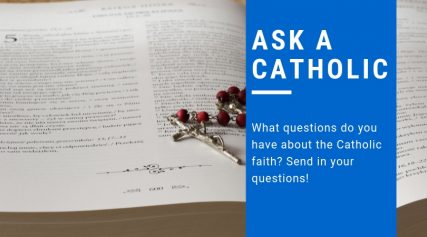What questions do you have about Catholicism? Submit them online, or fill out the form below.
By Mitch Finley
Gotta ask a Catholic about this because I’m pretty sure this is not how a ‘blessing’ works.
“Fr. Matthew Barzare and parishioners of St. Anne Church in Cow Island [Louisiana] enlisted the help of a crop duster pilot to bless their community. They loaded 100 gallons of holy water into the plane and the pilot sprayed the water onto the town and the nearby farms. Parishioners also brought water from home to the airstrip to be blessed by Fr. Barzare. The blessing was the brainchild of L’Eryn Detraz, a missionary currently stationed in Ohio who is a native of Cow Island. A happy and blessed Christmas to everyone from St. Anne Church and parishioners!” Click here to read this story.
You’re right that this is not how a blessing works, at least not most of the time. On the other hand, while a tad over the top, this creative exercise in the use of holy water strikes me as a harmless expression of good will from a Catholic parish community to its neighbors.
Let’s look at some basics, however, before we go any further. First, what is “holy water”? It’s simple, really. Holy water is ordinary water that has had a blessing recited over it, usually by a priest. Here is a good historical summary from Wikipedia:
“The use of holy water used by various sects of Christianity is a practice only attested to in Catholic documents. The Apostolic Constitutions, which goes back to about the year 400, attribute the precept of using holy water to the Apostle Matthew. It is plausible that in earliest Christian times water was used for expiatory and purificatory purposes in a way analogous to its employment in Jewish Law. Yet, in many cases, the water used for the Sacrament of Baptism was flowing water, sea or river water, and it could not receive the same blessing as that contained in the baptisteries in the view of the Roman Catholic church. However, Eastern Orthodox do perform the same blessing, whether in a baptistry or an outdoor body of water.”
Holy water is commonly found in fonts near the entrances of Catholic churches where it is used by the faithful to bless themselves as they enter or leave the church. Many, as they pass the holy water font, dip finger tips in the holy water and use it to make the sign of the cross, touching forehead then center, left, and right side of the chest.
There is nothing magical about this or any other use of holy water. Rather, it’s a simple reminder to oneself of one’s baptism and this sacrament’s continuing effects in one’s life.







